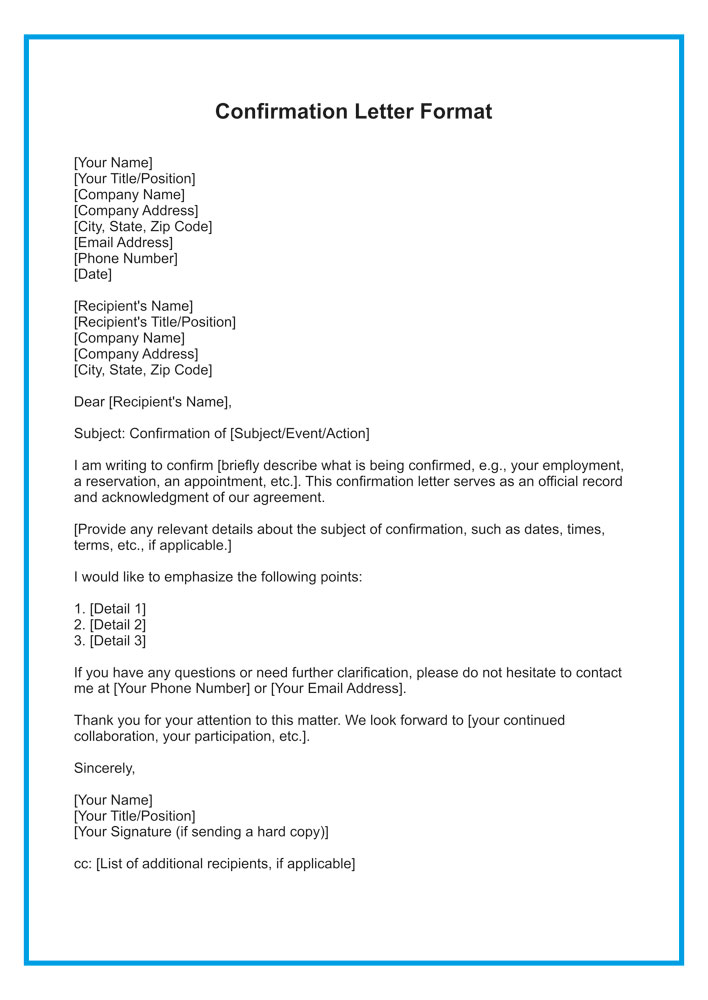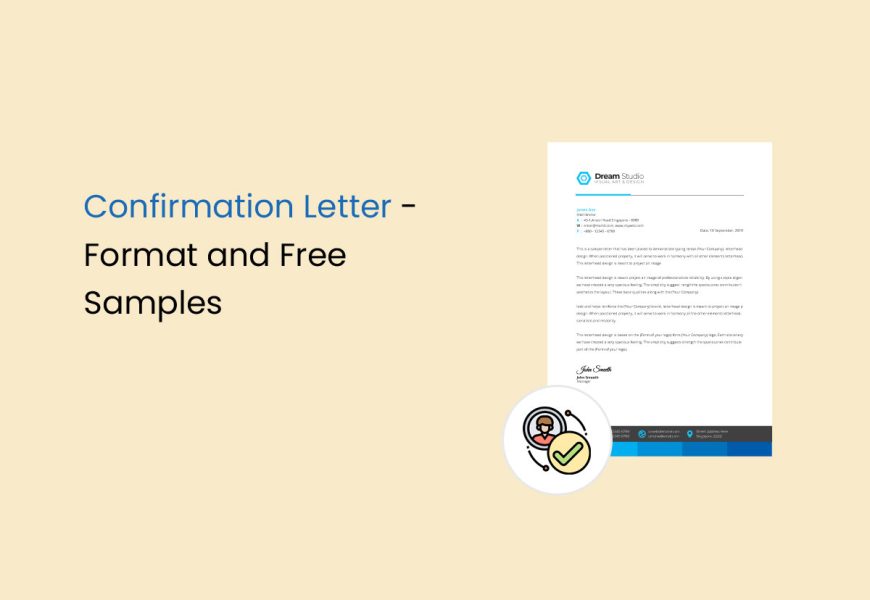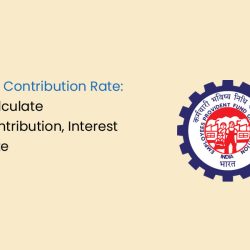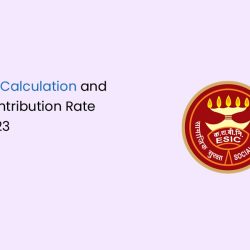A confirmation letter is a formal document that confirms an agreement. It plays a crucial role in professional and personal communication. Confirmation letters are a written record of the details of communication and help avoid misunderstandings or disputes that may arise in the future.
Read further to learn how to write a good confirmation letter.
What is a Confirmation Letter?
A confirmation letter is a written document to confirm an agreement, appointment, or reservation between two parties. It serves as proof of the agreed terms and is used to confirm the specific details of a transaction or agreement. This letter is typically sent after the initial deal has been made. It is a formal way of ensuring that both parties have a clear understanding of the terms of the contract. The letter may include essential details such as the date, time, location, and purpose of the agreement or transaction. It can be sent through email, mail, or fax and is used in multiple fields such as business, education, and legal.
How to Write a Confirmation Letter
You can write a letter of confirmation by following these steps:
- Craft a Header: To ensure effective communication, it is crucial to add a header at the top of your confirmation letter, including names, numbers, and addresses. Emails require a suitable subject line. Add a date to record the communication.
- Start with an Explanation: In the opening sentence, explain what you are responding to and state your decision. This allows the recipient to understand the intent of the letter immediately. For example, if you are confirming the time for a meeting, you can mention your preferred time in your first sentence.
- Include Relevant Information: After confirmation, provide all relevant details. For instance, if you are responding to a job candidate, you can include information about the position’s responsibilities, compensation, and benefits. The details and information you have in this section will depend on the objective of your response.
- Mention the Attached Documents: When sending a confirmation letter or email to someone, specify any attachments and their purpose. For example, if you’re confirming a business relationship, attach a signed contract or one to sign. If you’re confirming the selection of a candidate, attach an offer letter for reference. This helps avoid confusion and ensures everything is clear for both parties.
- Write a Supportive Statement: End your confirmation letter with a supportive message. The tone of this statement will depend on the objective of your response. If confirming a meeting, express your enthusiasm for it. If establishing a business agreement, close with a statement about your excitement to work together.
- Proofread: Proofread your letter multiple times and check for spelling, grammar, and punctuation errors. Ask a colleague or mentor to review it for a professional tone.
What to Include in Confirmation Letter?
You should include the following in a letter of confirmation:
- Name and Address: Start with the sender’s name and address, which should be at the top of the letter and aligned to the left.
- Date: The date the letter is written should be located below the sender’s address and aligned to the left.
- Recipient Name and Address: Mention the recipient’s name and address below the date and align them to the left.
- Salutation: The opening greeting of the letter should be formal and address the recipient by name.
- Subject: In the subject line, explain the letter’s purpose precisely and concisely.
- Introduction: The introduction should clearly and concisely state the letter’s intent.
- Details of Agreement: Provide specific details of the transaction, agreement, or appointment, including dates, times, and locations.
- Special Instructions or Requirements: If any special instructions or requirements exist, mention them in a separate section.
- Additional Information: Include any other information relevant to the transaction or appointment.
- Contact Information: At the end of the letter, provide the sender’s contact information, including phone number and email address.
- Closing: Close the letter with a message of appreciation for the recipient’s attention to the matter.
- Signature: The letter should be signed by the sender.
- Enclosures: Any documents or attachments included with the letter should be listed at the bottom.
Types of Confirmation Letter
The different types of letters of confirmation are as follows:
- Job Confirmation Letter: This letter serves as an official confirmation of an employee’s status. It is usually given to a newly hired or existing employee after they have completed a probationary period or had their contract renewed. The letter typically contains essential details such as the employee’s job title, compensation package, and other terms and conditions.
- Confirmation Letter after Probation: It is similar to a job confirmation letter and is issued after the successful conclusion of an employee’s probation term. This letter confirms that the employee has been moved from probation to permanent employment.
- Salary or Appraisal Confirmation Letter: This letter confirms an employee’s salary details after a performance review or job confirmation. It includes the gross salary, allowances, and other benefits.
- Internship Confirmation Letter: It confirms the acceptance of a candidate for an internship. It mentions details like the internship period, roles and responsibilities, and any stipend or benefits to be received.
- Confirmation of Employment Letter: This is a general letter confirming a person’s employment with the company. Employees often request it to apply for a loan or visa. This letter includes employment status, job title, and salary information.
- Balance Confirmation Letter: A balance confirmation letter confirms the settlement of accounts or dues between the company and employees. It is less common than other confirmation letters but could be relevant in cases of final settlements or for verification purposes.
Confirmation Letter Format
[Sender’s Name] [Sender’s Address] [City, State ZIP Code] [Date] [Recipient Name] [Recipient Address] [City, State ZIP Code] Subject: Confirmation for (_____) Dear [Recipient Name], I am writing to confirm the [purpose of this letter]. This letter serves as confirmation that [insert details of the transaction or appointment]. The following are the details of our agreement: [Insert details of the agreement or transaction] [Insert any special instructions or requirements] [Insert any additional information] If you need anything, contact me at [contact information]. We are looking forward to [insert plans]. Thank you for your attention to this matter. Sincerely, [Your Name]

Download Different Confirmation Letter Formats
| Formats | Files |
|---|---|
Confirmation Letter Format in Word |
Download |
Confirmation Letter Format in Pdf |
Download |
Confirmation Letter Samples
Here are some examples of confirmation letters:
Confirmation Letter for Employee
[Sender's Name] [Sender's Address] [City, State ZIP Code] [Date] [Recipient Name] [Recipient Address] [City, State ZIP Code] Subject: Employment Confirmation Letter Dear [Recipient Name], We are pleased to confirm your employment with ABC Ventures starting from [Joining Date] in the position of [Job Title]. As per the terms and conditions of your employment, your responsibilities will include [Job Responsibilities]. Your starting salary is [Salary]. You will receive [Employee Benefits] and work according to the following schedule: [Work Schedule]. Contact us with any employment questions or concerns. We are looking forward to a successful relationship. Sincerely, [Sender's Name] [Sender's Signature]
Salary Confirmation Letter
[Sender's Name] [Sender's Address] [City, State ZIP Code] [Date] [Recipient Name] [Recipient Address] [City, State ZIP Code] Subject - Salary Confirmation Letter Dear [Recipient Name], We are writing to confirm the salary you will receive at ABC Ventures, effective from your joining date. Your starting salary will be [Salary], and you will be eligible for [Employee Benefits]. Your salary will be reviewed annually based on your performance and company policies. Please let us know if you have any salary-related queries or concerns at ABC Ventures. We value your contributions and look forward to a successful working relationship. Sincerely, [Sender's Name] [Sender's Signature]
Internship Confirmation Letter
[Sender's Name] [Sender's Address] [City, State ZIP Code] [Date] [Recipient Name] [Recipient Address] [City, State ZIP Code] Subject: Job Confirmation Letter Dear [Recipient Name], We are delighted to confirm your acceptance to the [Internship Program Name] at ABC Ventures. Your internship will commence on [Start Date] and conclude on [End Date]. As an intern, your primary responsibilities will be [Internship Responsibilities]. You will receive a stipend of [Stipend Amount] for your work. Please contact us with any questions or concerns about your internship with ABC Ventures. We look forward to working with you! Sincerely, [Sender's Name] [Sender's Signature]
Importance of Confirmation Letter
The following reasons highlight the importance of a confirmation letter:
- It confirms and solidifies verbal agreements between two parties.
- It helps ensure that both parties clearly understand the terms and builds trust.
- It serves as evidence in court if needed.
- It reduces the chances of fraudulent activity.
Confirmation Letter Writing Tips
Some tips for writing a letter of confirmation are as follows:
- Use a professional tone and language throughout the letter, and avoid using informal speech or slang.
- Include specific details like dates, times, and locations when providing information about an agreement or transaction.
- Write clearly and concisely, avoiding lengthy and complicated sentences.
- Ensure that all the information mentioned in the letter is accurate.
- Tailor the letter to the specific candidate and position for a more personalised and sincere tone.
- Make sure to always keep a signed copy of the letter for your records.
Conclusion
Confirmation letters are vital for effective communication in both personal and professional settings. By understanding the crucial elements, following best practices, and referring to relevant examples, you can create confirmation letters that promote clarity, trust, and positive relationships with your recipients.
Frequently Asked Questions
What should be included in a confirmation letter?
A confirmation letter should include the date, recipient's name and address, a brief description of what is being confirmed, relevant details such as time, date, location, or terms of the agreement, a clear confirmation statement, and a polite closing.
Is it necessary to send a confirmation letter?
Confirming conversations or transactions with a letter is a good practice to document and prevent misunderstandings.
When should a confirmation letter be sent?
A confirmation letter should be sent immediately after an agreement or arrangement to ensure all parties understand the details.
How should the tone of a confirmation letter be?
The tone should be professional, formal, and courteous.
Is it necessary to follow up with the recipient after sending a confirmation letter?
Following up with recipients after sending a confirmation letter is good practice to ensure they received it and have no further questions.


























